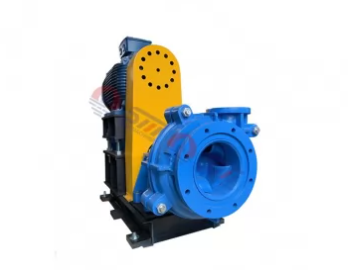Understanding Froth Pump: A Comprehensive Guide
Understanding Froth Pump: A Comprehensive Guide
Froth pumps are specialized centrifugal pumps designed specifically for handling frothy liquids. These pumps play a vital role in the mining, mineral processing, and wastewater treatment industries, effectively transporting slurries with high air content. Understanding how froth pumps work and their applications can significantly impact efficiency and productivity in these fields.
What is a Froth Pump?
A froth pump is engineered to manage slurries with a considerable proportion of air or gas, which can pose challenges for standard centrifugal pumps. The unique design features of froth pumps allow them to handle the complexities associated with transporting frothy materials. They are adept at maintaining consistent flow while minimizing the impact of air entrapment.
Key Components of Froth Pumps
The primary components of a froth pump include:
- Impeller: The impeller design is crucial in managing air inclusion and optimizing the flow of the slurry.
- Volute: The volute assists in converting kinetic energy into pressure, essential for transporting the slurry effectively.
- Seal and Bearing Systems: These systems help maintain pump integrity and performance, preventing air from entering unauthorized regions.
How Does a Froth Pump Work?
Froth pumps operate differently compared to traditional pumps due to the need to manage air within the slurry. The impeller generates a downward vortex which aids in breaking the surface tension of the froth, allowing the pump to draw in and transport the mixture efficiently.
Applications of Froth Pumps
Froth pumps find applications in various industries, including:
- Mining: Used to transport mineral slurries that contain air.
- Wastewater Treatment: Efficiently moves sludges with high gas content.
- Chemical Processing: Handles mixtures that can create frothy conditions during reactions.
Choosing the Right Froth Pump
Selecting an appropriate froth pump requires careful consideration of factors such as the type of material, its froth characteristics, flow rate requirements, and system pressure. Conducting thorough research and consulting knowledgeable experts can guide the procurement process to ensure optimal performance.
Maintenance Tips for Froth Pumps
Regular maintenance is key to ensuring that froth pumps operate efficiently. Here are a few tips:
- Perform routine inspections to identify wear and tear.
- Ensure that the impeller and volute are free of blockages.
- Check seals and bearings for optimal functioning.
For anyone looking to explore more about Froth pumps and their specifications, a deeper dive into the technical details is essential.
In conclusion, understanding the intricacies of froth pumps and their vital role in various industrial applications can pave the way for enhanced operational efficiencies. Leveraging the correct types and maintenance practices can significantly reduce downtime and improve profitability.
For more information or questions regarding froth pumps, feel free to contact us.



